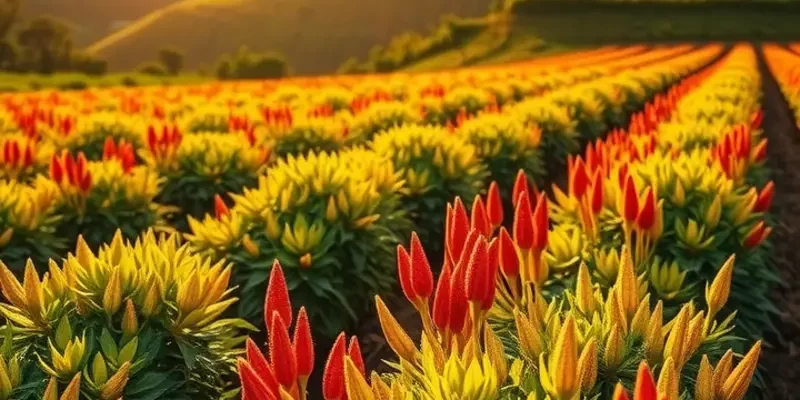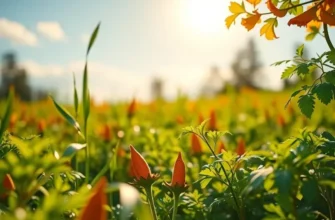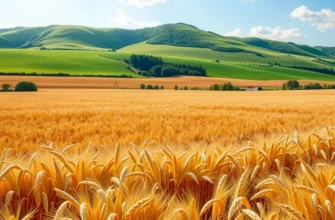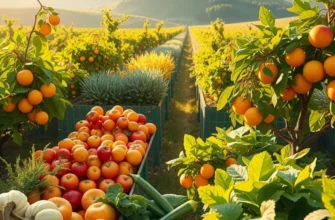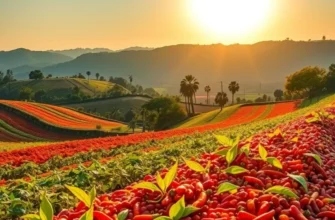Discover the vibrant world of regional spice harvesting, an age-old tradition imbued with culture and history. From the sun-kissed fields of India to the aromatic gardens of Morocco, spices are not just ingredients; they are vessels of stories and heritage. This exploration invites food enthusiasts and the culturally curious to delve into the colorful practices, unique climates, and the devoted hands that cultivate these flavorful treasures across the globe.
Aromatic Traditions: The Myth and Magic of Spice Cultivation
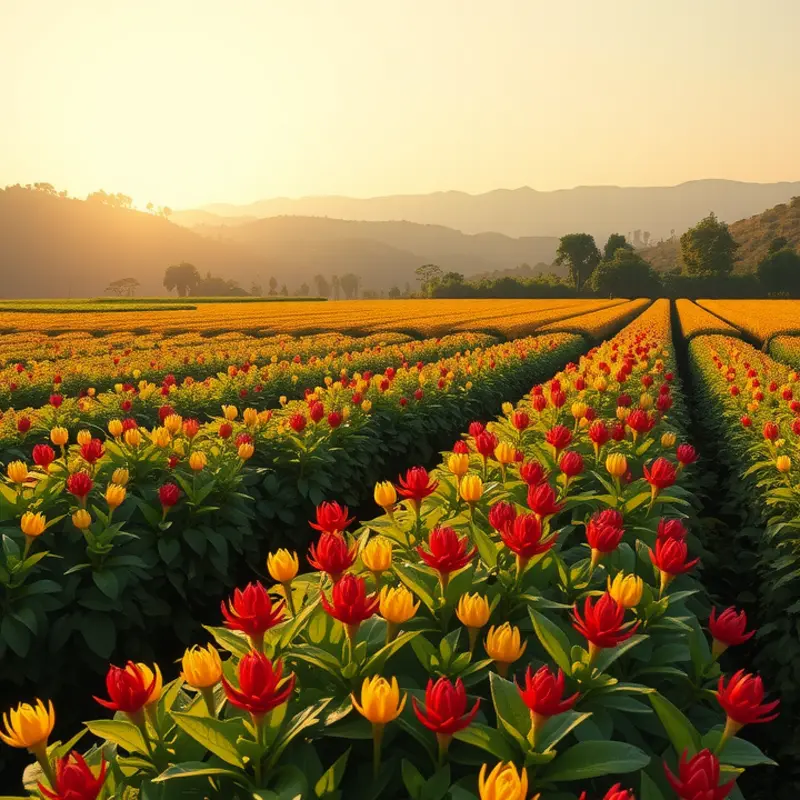
In the serene saffron fields of Kashmir, the mystique of spice cultivation intertwines with the vibrant tapestry of local tradition. Harvesting saffron, known as the ‘red gold,’ is a meticulous process. Farmers rise before dawn, guided by the ethereal glow of the morning light. Excitement mingles with tranquility as they handpick delicate purple crocus flowers. This task connects them with their ancestors, who mastered the art through centuries of practice. Working in harmony, families ensure the threads within are harvested with precision, preserving the extraordinary flavor attributed to Kashmir’s saffron.
Meanwhile, on the sunlit plains of Mexico, the chili farms erupt in vibrant reds and oranges during harvest. Picking chilies demands a blend of skill and patience, learned over generations. Mexican farmers use simple, handcrafted tools for this task, upholding a tradition that respects the plant’s integrity. This careful handling ensures each pepper retains its fiery essence and robust flavor. Harvesting techniques are passed from elder to youth, reinforcing cultural continuity and a profound connection to the land.
Throughout these regions, spice cultivation serves more than mere economic means. It encapsulates the essence of environmental stewardship, weaving sustainable methods into the fabric of daily life. In Sri Lanka, producers of Ceylon cinnamon adhere to centuries-old sustainable harvesting practices. Here, only the mature branches are cut, safeguarding the tree’s continual growth. The bark is carefully peeled and dried, infusing dishes worldwide with the purest Ceylon cinnamon flavor. Such practices protect not only flavor but also biodiversity, underscoring nature’s symbiosis.
Moreover, many spice-growing communities integrate ecological balance into their rituals. They understand that preserving the health of the soil and surrounding ecosystems is vital for ongoing cultivation. Farmers in Kerala credit the richness of their black pepper harvests to the intercropping techniques they employ, echoing ancient wisdom by planting complementary crops like coffee and cardamom together. These methods promote a natural pest-balance and replenish nutrients, ensuring the soil remains fertile over time.
These inherited practices especially highlight the importance of sustainable spice cultivation. Beyond the fields, spices inspire a deeper appreciation for cultural and culinary diversity, nurturing global cuisine. Understanding and respecting these traditions drives a broader conversation on sustainability, from farming practices to global consumption trends. For more on cultivating sustainable eating practices, consider exploring ideas for eco-smart kitchen storage.
Spice cultivation, rich in history and cultural significance, extends beyond mere flavor enhancement. It fosters a deeply-rooted relationship between humans and nature, bridging past and present through shared wisdom. As we savor the scents and tastes carried from distant fields to our kitchens, we honor these age-old traditions that remain as vibrant and essential as ever.
From Seed to Spice: The Journey of Flavor
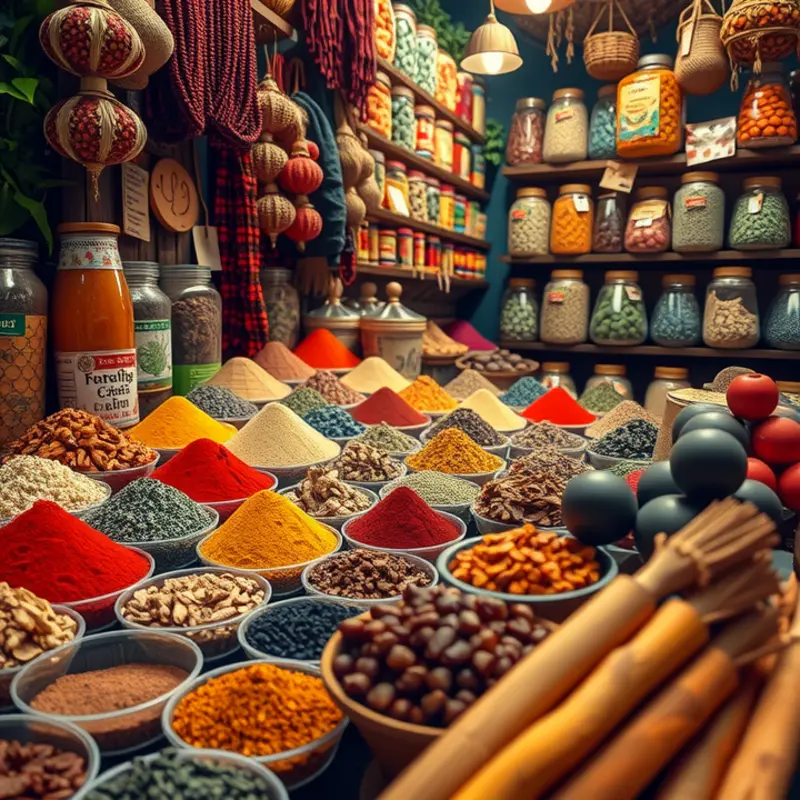
The journey of a spice begins with a tiny seed, carefully selected for its potential to transform into aromatic treasures. Each spice requires specific growing conditions, from the humidity-loving cardamom to the dry deserts preferred by cumin. Farmers meticulously prepare their lands, understanding the nuances of soil, climate, and seasonal cycles that contribute to the nuances of the flavor profile. The lifecycle of a spice is a testament to nature’s complexity, with each stage contributing to its final aromatic quality.
The harvest process is an intricate dance of timing and technique. For example, vanilla beans are hand-picked when just ripe, ensuring the highest quality and aroma. Harvesters often climb steep terrains or navigate dense fields, guided by generations of knowledge about the perfect moment to pluck or cut the fruit, seed, or bark. The post-harvest phase is equally important. Spices undergo drying, a process that seals in flavor while preserving them for long journeys across the globe. The sun’s gentle heat often suffices, but some spices demand specialized drying conditions to achieve their optimal state.
Grinding is where spices reveal their true potential. Artisans use traditional mortars and pestles or modern machines to blend and crush. This step releases essential oils, heightening the spice’s fragrance and potency. Delicate saffron threads and robust black pepper alike are transformed by this alchemical process. Artisans guard their techniques, often passed down through families, ensuring that each batch maintains a consistent quality.
Stories from spice farmers reveal the cultural tapestry interwoven with their work. In Kerala, India, the monsoon sprinkles life into pepper vines, while in Morocco, women’s cooperatives sustainably harvest and sell saffron, transforming communities. These narratives highlight the essential role of artisans not just agriculturally, but socially and economically, providing insights into the cultural significance of their labor.
In different cuisines, spices are the heart and soul, defining the distinction between regional dishes. Indian curries sing with turmeric and cumin, while the Middle Eastern cuisine hums with the warmth of cinnamon and cardamom. Each region holds unique flavor secrets, showcased through their use of spices. In recent culinary trends, spices transcend cultural boundaries, integrating into global cuisine in innovative ways, from adding heat to chocolates to spicing up cocktails.
Understanding the lifecycle of spices enhances our appreciation of their complex flavors. This knowledge empowers us to use them more thoughtfully in our cooking, celebrating their journey from seed to spice. Embracing mindful usage and sustainable practices in our kitchen aligns with broader efforts to reduce waste in food preparation, as discussed in some culinary strategies here. This approach highlights the interconnectedness of cultural traditions and modern culinary practices, marrying the old with the new to create a flavorful world of possibilities.
Final words
Regional spice harvesting is more than just a means of obtaining flavor. It is a celebration of culture, history, and sustainability. As we navigate through the aromatic world of spices, we uncover the threads that bind us to communities across the globe. Each pinch of spice carries with it a story of dedication, tradition, and culinary artistry. As food enthusiasts, embracing these stories can enhance our appreciation for every meal, turning food into a rich tapestry of global heritage. Keep exploring, and may your culinary adventures be vibrant and flavorful!

